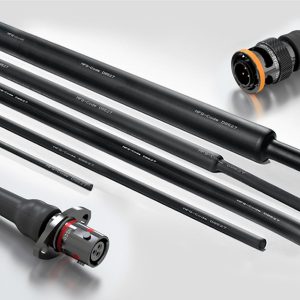 If you work as an electrician, engineer, or other fields of science, it’s likely that you’ve either heard of or come into contact with heat shrink tubing. Primarily utilized to protect electrical wires, heat shrink tubing can help prevent fires, reduce loss of energy, and provide an affordable solution to your wiring needs. If you’re interested in learning more about how heat shrink tubing can provide further benefits in the aerospace industry, consider the following facts.
If you work as an electrician, engineer, or other fields of science, it’s likely that you’ve either heard of or come into contact with heat shrink tubing. Primarily utilized to protect electrical wires, heat shrink tubing can help prevent fires, reduce loss of energy, and provide an affordable solution to your wiring needs. If you’re interested in learning more about how heat shrink tubing can provide further benefits in the aerospace industry, consider the following facts.
Heat shrink tubing can be found in nearly every location on aircraft and can interact with aircraft EWIS components. These materials protect wire repairs, provide additional abrasion protection, and prevent the ingress of fluids (and in a pinch, may be used as secondary harness support when other options are not viable). Although this product can be found everywhere, there are still challenges that are common to manufactures and maintainers.
Flammable
For those that are not familiar with the flammability classifications for heat shrink, there are three currently defined:
Class 1: Non-flammable
Class 2: FLAMMABLE MATERIAL
Class 3: Highly non-flammable
For those in the aerospace industry, an immediate question should be considered: Why is a flammable material included in an aerospace standard? Great lengths are taken to ensure that nearly everything on an aircraft is non-flammable (with the small exception of fuel). Unfortunately, because this material is used widely outside aerospace, the class #2 heat shrink tubing cannot be removed from the standard. As such, there should be an aerospace restriction for Class 2 heat shrink.
Protection
One of the prime benefits of heat shrink tubing is the protection offered to wires and cables when exposed to a variety of conditions and environments. Other factors in production environments can expose cabling to water or moisture such as steam, oils, grease, chemicals, and acids. Outdoors, humidity, temperature fluctuation, rain, UV exposure, and environmental conditions, in general, can damage wiring and cabling.
Reduces Cable Stress
Though heat shrink tubing offers protection for cabling and wiring from exposure to environmental conditions, it also aids in preventing undue strain or stretching of wires and cables confined to insufficient space or length. Heat shrinking increases mechanical support for maintaining connectivity of wires and cables that otherwise would be subjected to strain and stress that could lead to premature failure.
Corrosion Resistance
Over time, in any environment, when oxygen combines with the metal it forms a new compound called oxide that weakens the bonds of the metal itself, causing it to corrode. Metals and their alloys used in wiring and cable applications can be made corrosion-resistant, but only insulating the material can ensure against corrosion. Heat shrink tubing perfectly seals and protects wires and cabling from corrosion that might occur from external disturbances.
If you have any questions or concerns about heat shrink and the aerospace industry, give Nu-Tech a call. We’re here to help.


